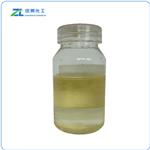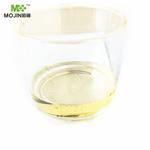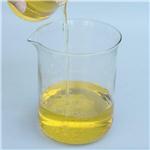Chemical Properties
colourless to light yellow or red liquid
Chemical Properties
T. vulgaris L. and T. zygis L. are commonly used for the distillation of the essential oil. Spain produces the largest
amount. T. serpyllum L. is also used for distillation (Russia). This oil is not only of limited interest to the flavorist, but also commercially
rare. T. serpyllum extracts have been used to a limited extent in the preparation of galenic products. T. capitatus Hoff. & Link.
is a variety growing in Sicily, Spain and North Africa; it also is used for distillation. The oil is obtained by water and steam distillation
of the partially dried flowering plant of T. vulgaris and T. zygis in varying yields (0.5 to 1.2%). It has a strong, aromatic odor and
a warm, somewhat sharp flavor (red thyme oil). White thyme oil is obtained by rectification of the distilled red thyme oil, exhibiting
similar, but milder odor and flavor characteristics.
Chemical Properties
Thyme oils are obtained by steam distillation of flowering herb of the thyme
species Thymus vulgaris L., grown in the Mediterranean region and in Eastern
Europe, and of Thymus zygis L., cultivated in Spain.The typical character of true
thymian oils is a relatively high content of the phenolic compounds thymol and
carvacrol, although thyme oils containing other main constituents (linalool, borneol)
may also be traded as thyme oils.
The best known thyme oil is Spanish red thyme oil obtained from T. zygis L. It
is a red or reddish liquid with a strong, characteristic, spicy, phenolic odor and a
sharp, lasting taste and has the highest thymol content of all thyme oils.
d
2020 0.910–0.937; n
20D 1.4940–1.5040; α
20D ?6 ° to ?1 °; solubility: 1 vol in ≤3 vol
of 80% ethanol.
The main constituent of thyme oil is thymol (37–55%), which also predominantly
determines the sensory properties of the oil.
Physical properties
The oil is a colorless, yellow or red liquid. The oil is affected by light. White thyme oil is a
pale-yellow liquid.
Occurrence
Found in the plants Thymus vulgaris L. and Thymus zygis L. (Fam. Labiatae) (Guenther, 1949).
Uses
thyme oil is widely used in botanical therapy since antiquity for its warming, stimulating, and cleansing properties, it is also considered a powerful anti-septic and tonic. Thyme oil serves as a natural preservative with anti-bacterial activity against a wide spectrum of bacterial classes. The genus Thymus produces a variety of species, subspecies, and chemotypes, many with completely different chemical compositions. This includes citriodora thyme, lemon thyme, and red thyme. Lemon thyme is described as healing and soothing for its use in skin care. The oil is obtained from the herb’s branches and flowers.
Definition
Extractives and their physically modified derivatives. Thymus vulgaris or Thymus zygis, Labiatae.
Preparation
By water and steam distillation of the partially dried plants Thymus vulgaris L. and Thymus zygis L. (Gildemeister & Hoffman, 1961).
Essential oil composition
Thymol and carvacrol are the two main constituents of the oil. Their relative percentage ratio in the oil
varies widely, depending on the botanical source. Other constituents include anisyl alcohol, linalool, borneol, geraniol, camphene
and gamma-terpinene.
Biological Activity
Taste at 50 ppm
Safety Profile
Moderately toxic by
ingestion. A severe skin irritant. Mutation
data reported. An allergen. Combustible
when exposed to heat or flame. When
heated to decomposition it emits acrid
smoke and irritating fumes.




